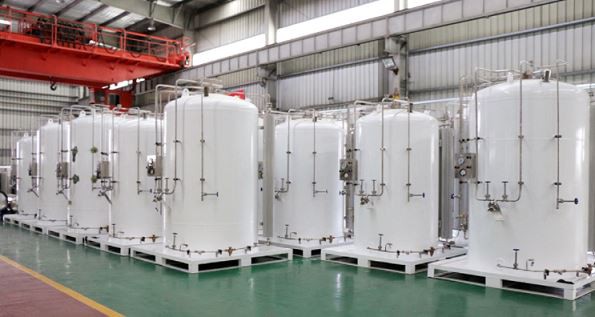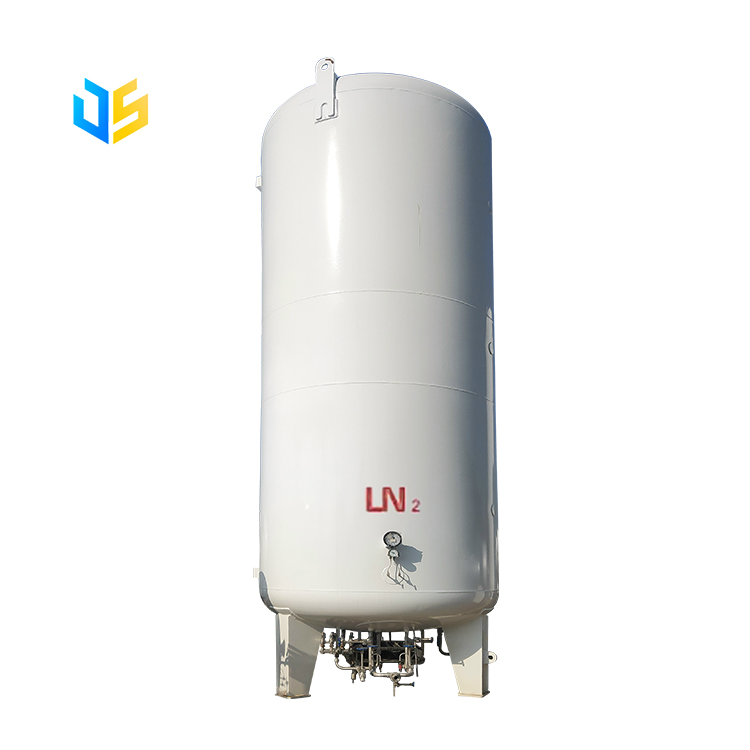
Optimizing Insulation Design for Large-Capacity Cryogenic LNG Storage Tanks
Optimizing Insulation Design for Large-Capacity Cryogenic LNG Storage Tanks
The integrity and efficiency of large-capacity cryogenic LNG (Liquefied Natural Gas)
Email: sales@jianshentank.com
Wechat/Whatsapp: +86 15517238365
Add: NO. 591 WENFENG ROAD, WENFENG DISTRICT, ANYANG, HENAN, CHINA
Optimizing Insulation Design for Large-Capacity Cryogenic LNG Storage Tanks
The integrity and efficiency of large-capacity cryogenic LNG (Liquefied Natural Gas) storage tanks hinge significantly on the effectiveness of their insulation systems. The core purpose of an LNG tank's insulation design is multifaceted. Primarily, it's about meeting the demanding requirements of the LNG production process, preserving operational capacity, minimizing the boil-off rate (BOR) of valuable LNG, and ultimately, conserving energy. A well-designed insulation system also plays a crucial role in preventing condensation from forming on the tank's outer surface, a phenomenon that can lead to corrosion and compromise structural integrity. Furthermore, effective insulation helps maintain a safer and more comfortable working environment around the storage facility.
Factors in Cryogenic Tank Insulation Design
When designing the cold box or insulation chamber of a cryogenic storage tank – especially a large LNG storage tank – a deep understanding of the thermal properties of cryogenic liquids and the behavior of materials at extremely low temperatures is paramount. Different tank configurations, operational demands, and environmental conditions necessitate the use of varying insulation strategies and materials. The design process should carefully evaluate:
Thermal Conductivity: Selecting materials with exceptionally low thermal conductivity is essential to minimize heat transfer into the cryogenic liquid.
Density: Lighter insulation materials reduce the overall structural load on the tank.
Moisture Resistance: Preventing moisture ingress into the insulation is critical as water can freeze, degrade performance, and accelerate corrosion.
Mechanical Strength: The insulation must withstand the forces exerted by the LNG, the tank structure itself, and external environmental factors.
Insulation Strategies for Different Tank Sections
Let's examine specific insulation approaches employed in different sections of a typical large-capacity LNG storage tank:
Top of the Tank: The insulation on top of the inner tank ceiling is not subjected to the pressure exerted by equipment or vaporized gas, simplifying the design. Low-density, low-thermal-conductivity materials are preferred. In some designs, a thick layer (e.g., 500mm) of cold-insulating glass wool is used. To prevent the migration of expanded perlite (used in the side walls) into this area and to provide a vapor barrier, multiple layers of aluminum foil are often applied to the exterior of the glass wool. This also safeguards the inner tank from contamination.
Intermediate Wall Layers (Side Walls): Expanded perlite is a frequently chosen insulation material for the annular space between the inner and outer tank walls. Its relatively low cost, ease of installation, and acceptable thermal performance make it a practical choice. However, as the inner tank cools down and contracts, gaps can form, particularly at the top and edge regions of the sidewalls, leading to uneven insulation. To mitigate this, a flexible insulating fiberglass mat can be applied to the outer wall of the inner storage tank. This mat helps to prevent the ingress of moist air, which can lead to ice formation within the perlite. The mat also acts as a buffer, distributing the pressure exerted by the perlite more evenly and minimizing stress on the inner tank wall. Furthermore, it can reduce or eliminate the need for periodic perlite replenishment.
Bottom of the Tank: The insulation design at the bottom of the LNG storage tank is particularly critical, as it must simultaneously minimize heat ingress and provide sufficient structural support to bear the substantial weight of the inner tank and its LNG contents. A robust and carefully engineered insulation structure is essential. For example, in the design of a 200 m³ capacity cold storage tank, the bottom insulation is often segmented into two primary regions: a pressure ring and a central ring. The pressure ring, which bears the brunt of the tank's weight, often employs a composite structure of high-strength concrete and glass brick, offering excellent compressive strength and cold resistance. The central part of the bottom, where the load is less concentrated, may rely primarily on glass brick, chosen for its inherent strength and ability to withstand cryogenic temperatures.
Conclusion
The design and implementation of effective insulation systems are fundamental to the safe, efficient, and economical operation of large-capacity cryogenic LNG storage tanks. By carefully considering the specific thermal, structural, and operational requirements of each tank component, and by selecting appropriate insulation materials and techniques, it is possible to minimize heat transfer, reduce LNG boil-off, and ensure the long-term reliability of these critical energy infrastructure assets.













Comments